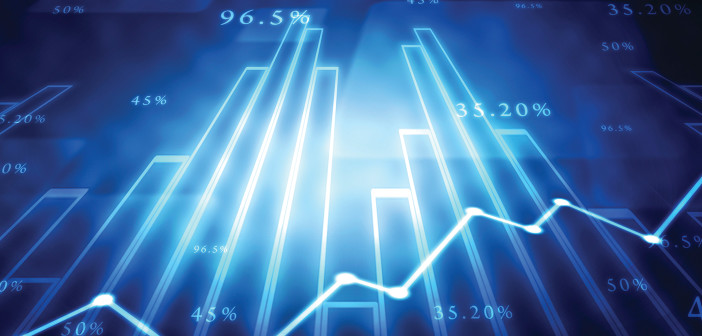The U.S. economy improved in 2017. After growing at a sluggish 1.2 percent in the first quarter, the economy grew at a solid 3.1 percent in the second quarter, and 3.3 percent in the third. Third quarter growth was surprisingly strong, given the hurricanes. The New York Federal Reserve estimates fourth quarter growth at 3.2 percent – this means that the economy grew by 2.7 percent in 2017, compared to 1.95 percent in 2016.
Economic growth is measured by the growth in gross domestic product (GDP). GDP is the value of all final goods and services produced in the economy in a given time period. This also equals total income generated from producing these goods and services. Small increases in the GDP growth rate lead to large differences in income over time due to the “rule of 70.” This says that 70 divided by the GDP growth rate is the length of time it takes for a country’s output and income to double. When the economy grows at 2.7 percent, output and income double every 26 years. When the economy grows at 1.95 percent, output and income double every 36 years.
The unemployment rate is currently 4.1 percent, which is the lowest it’s been since the late 1990s. The unemployment rate today is also lower than it was in the 1980s through the mid-1990s. At an average of 174,000 new jobs per month, job creation in 2017 was a bit less than in 2016, which saw an average of 187,000 new jobs created per month. This is due to the abnormally low job growth in September caused by the hurricanes. Without the hurricanes, 2017 job growth would be on par with 2016. Since job growth usually lags economic growth, we should expect job growth to increase if the economy continues to grow at three percent.
The bond market does not forecast inflation on the horizon. The interest rate on a ten-year Treasury bond that pays the same interest rate regardless of the rate of inflation is only 1.95 percent higher than the interest rate on a ten-year Treasury Inflation Protected Security, which pays an interest rate that protects against inflation. This means that the bond market is forecasting 1.95 percent inflation over the next ten years.
The improved economy, coupled with a 22 percent increase in the Dow Jones Industrial Average, has led to more optimistic consumers and businesses. The University of Michigan Index of Consumer Sentiment indicates that consumers are more optimistic now that at any time since the late 1990s. The Gallup organization found that the percentage of voters identifying an economic issue as the nation’s most important problem fell by half between 2016 and 2017. The U.S. Bank’s Small Business Annual Survey found that 80 percent of small businesses describe their business as strong, which is a record for the survey. There are still a lot of challenges in the economy, but the performance of the economy in 2017 is encouraging.








